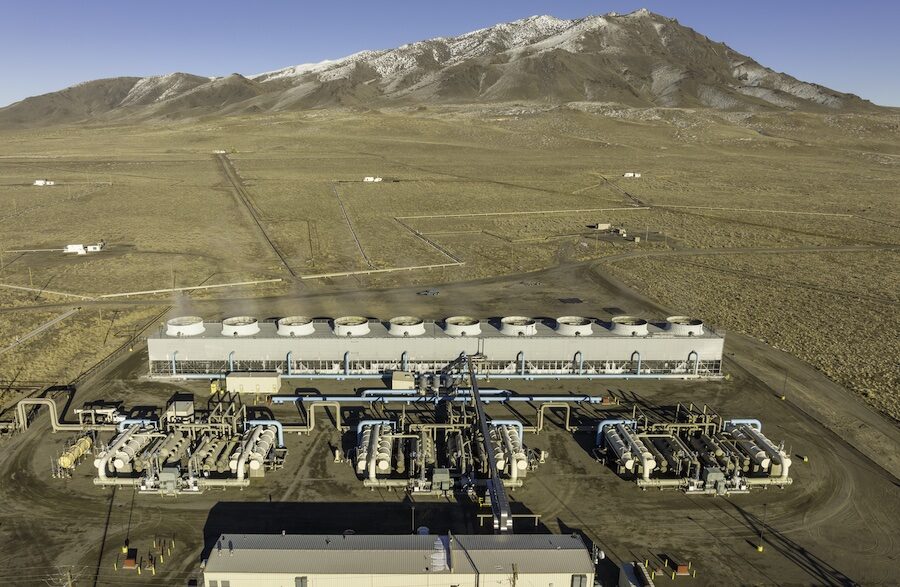
Google Secures Approval for Geothermal to Power Data Centers

In their quest to source carbon-free energy to the electric grid, technology titans Google and Meta are investing in geothermal energy to power data centers as demand grows nationwide.
In Nevada, Google advanced toward its goal of round-the-clock carbon-free power for its data centers and office campuses by 2030 with approval on May 13 from the state Public Utilities Commission for an unprecedented energy supply agreement (ESA) to help power its data centers and the cloud region in the state, says Chris Mussett, a Google spokesman in Mountain View, Calif.
“The U.S. Dept. of Energy found that geothermal energy could provide up to 120 gigawatts of reliable, flexible generation capacity in the U.S. by 2050 and generate over 16% of the U.S.’ anticipated electricity needs,” a Google blog says.
Data centers under construction in North America grew by more than 60% from 2016 to 2023, according to the U.S. Census Bureau’s Quarterly Workforce Indicators report. Much of the rising demand comes from the technology sector revving up to adopt AI and cloud computing, manufacturing growth, and the need to charge millions of electric vehicles. Consulting firm Peak Strategies predicts peak demand in summer will rise by 38,000 megawatts in the U.S. over the next five years.
ESA Unlocks Geothermal Capacity
The power supply agreement, announced last year, will add 115 MW of 24/7 enhanced geothermal power generated by geothermal developer Fervo Energy, headquartered in San Francisco, and delivered by Nevada Energy, Musett says.
“This represents nearly 30 times growth in the geothermal capacity enabled by Google since it announced its successful commercial pilot with Fervo in 2023,” Mussett says.
The ruling also approves the nation’s first Clean Transition Tariff (CTT), a new utility rate that enables utilities and customers to enter long-term energy agreements that allow for investments in new grid-scale clean energy technologies, including geothermal energy.
The ESA allows Google “to receive exclusive electric service under the CTT from the 115-MW Corsac Station Enhanced Geothermal project in development by Fervo, once it reaches commercial operation,” commission records note. The long-term energy supply period is set to begin when Fervo reaches commercial operations and lasts for 15 years.
The Corsac Station project planned in Nevada is a single-phase development set to begin in 2026 and enter commercial operation in 2027, according to Power Technology.
In 2023, Fervo Energy launched exploration drilling in Beaver County, Utah at Cape Station, a next-generation geothermal energy project set to deliver 400 MW of 24/7 carbon-free electricity in 2026 and reach commercial scale by 2028, Fervo’s website notes. Researchers estimate that parts of Utah have more than 10 GW of high-quality geothermal reserves, it adds.
Fervo did not respond to ENR inquiries and Google declined to comment on questions about the Corsac Station development.
The ESA will not result in cost hikes for existing customers because it will achieve “stability and efficiency” which tends to drive costs down, commission records state.
After studying Google’s application, commission staff determined that through the ESA “Google is providing significant financial support, which facilitates a new technology” developed by Fervo through its next generation geothermal project that could become critical to Nevada Energy and its customers in the future.
It adds that “the Fervo Project would provide an incremental opportunity to contract renewable energy resources that are not intermittent, and which may help avoid the potential increased costs and operational difficulties associated with meeting the growing renewable portfolio standard requirement with prevalent existing resource types.”
Explosive Growth
Meta is also supporting development of key geothermal projects. Meta is partnering with Houston-based Sage Geosystems, a geothermal baseload and energy storage company, to develop a 150-MW geothermal energy project using advanced fracking technology. Sage would not disclose the project cost.
Phase one will bring 8 MW of power by 2027, and phase two will deliver up to 150 MW, with an option for an additional 200 megawatts, says Cindy Taff, Sage Geosystems CEO.
The first phase should be completed and producing electricity by 2027, she adds.
Currently the project team is working with Meta finalizing a location east of the Rocky Mountains and soon afterward “will begin front-end engineering design of the wells and facility,” Taff says.
The greatest challenges for the team are “interconnection to the utility grid and ordering long-lead equipment such as the Organic Rankine Cycle (ORC) power plant equipment,” she says.
The ORC equipment will be evaluated based on cost and efficiency once a site has been selected since “ambient temperature is a design input for the ORC power plant,” Taff adds.
Sage plans to hire a fracturing service company from the oil and gas industry to stimulate its wells using proprietary gravity fracturing technology, with fractures are pressure-propped and without sand or another proppant.
Sage and Meta are currently leading the project, but “Sage will hire various companies to provide equipment and service once we are in the front end of design and construction phases,” Taff says.
Post a Comment
You must be logged in to post a comment.





